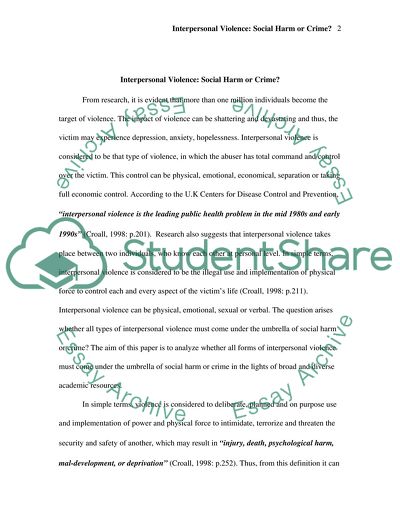Cite this document
(Interpersonal Violence: Social Harm or Crime Essay, n.d.)
Interpersonal Violence: Social Harm or Crime Essay. Retrieved from https://studentshare.org/social-science/1746386-should-some-forms-of-interpersonal-violence-be-defined-as-social-harm-rather-than-a-crime-critically-discuss
Interpersonal Violence: Social Harm or Crime Essay. Retrieved from https://studentshare.org/social-science/1746386-should-some-forms-of-interpersonal-violence-be-defined-as-social-harm-rather-than-a-crime-critically-discuss
(Interpersonal Violence: Social Harm or Crime Essay)
Interpersonal Violence: Social Harm or Crime Essay. https://studentshare.org/social-science/1746386-should-some-forms-of-interpersonal-violence-be-defined-as-social-harm-rather-than-a-crime-critically-discuss.
Interpersonal Violence: Social Harm or Crime Essay. https://studentshare.org/social-science/1746386-should-some-forms-of-interpersonal-violence-be-defined-as-social-harm-rather-than-a-crime-critically-discuss.
“Interpersonal Violence: Social Harm or Crime Essay”, n.d. https://studentshare.org/social-science/1746386-should-some-forms-of-interpersonal-violence-be-defined-as-social-harm-rather-than-a-crime-critically-discuss.


